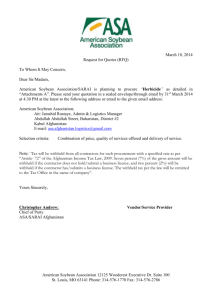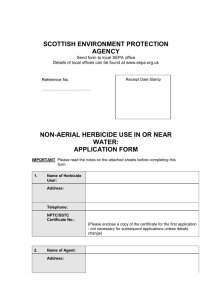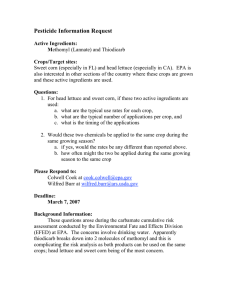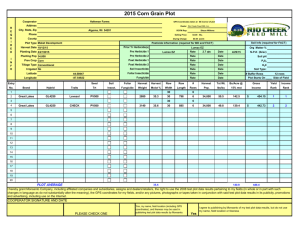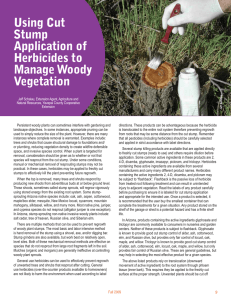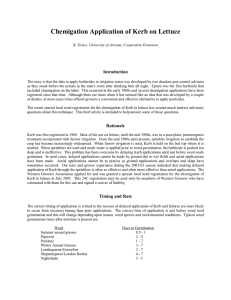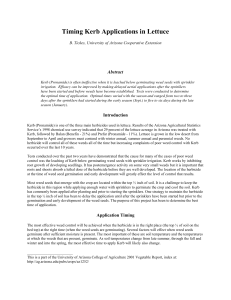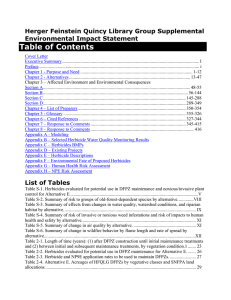Quantitative Guidelines For Evaluating Herbicide Injury In Lettuce
advertisement
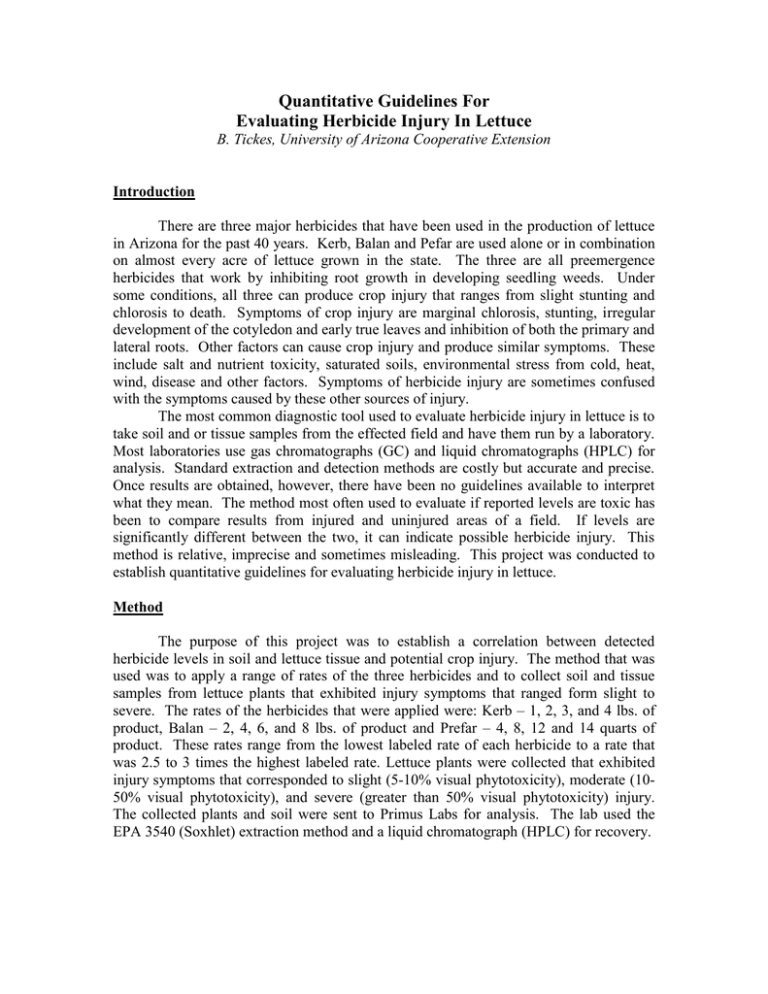
Quantitative Guidelines For Evaluating Herbicide Injury In Lettuce B. Tickes, University of Arizona Cooperative Extension Introduction There are three major herbicides that have been used in the production of lettuce in Arizona for the past 40 years. Kerb, Balan and Pefar are used alone or in combination on almost every acre of lettuce grown in the state. The three are all preemergence herbicides that work by inhibiting root growth in developing seedling weeds. Under some conditions, all three can produce crop injury that ranges from slight stunting and chlorosis to death. Symptoms of crop injury are marginal chlorosis, stunting, irregular development of the cotyledon and early true leaves and inhibition of both the primary and lateral roots. Other factors can cause crop injury and produce similar symptoms. These include salt and nutrient toxicity, saturated soils, environmental stress from cold, heat, wind, disease and other factors. Symptoms of herbicide injury are sometimes confused with the symptoms caused by these other sources of injury. The most common diagnostic tool used to evaluate herbicide injury in lettuce is to take soil and or tissue samples from the effected field and have them run by a laboratory. Most laboratories use gas chromatographs (GC) and liquid chromatographs (HPLC) for analysis. Standard extraction and detection methods are costly but accurate and precise. Once results are obtained, however, there have been no guidelines available to interpret what they mean. The method most often used to evaluate if reported levels are toxic has been to compare results from injured and uninjured areas of a field. If levels are significantly different between the two, it can indicate possible herbicide injury. This method is relative, imprecise and sometimes misleading. This project was conducted to establish quantitative guidelines for evaluating herbicide injury in lettuce. Method The purpose of this project was to establish a correlation between detected herbicide levels in soil and lettuce tissue and potential crop injury. The method that was used was to apply a range of rates of the three herbicides and to collect soil and tissue samples from lettuce plants that exhibited injury symptoms that ranged form slight to severe. The rates of the herbicides that were applied were: Kerb – 1, 2, 3, and 4 lbs. of product, Balan – 2, 4, 6, and 8 lbs. of product and Prefar – 4, 8, 12 and 14 quarts of product. These rates range from the lowest labeled rate of each herbicide to a rate that was 2.5 to 3 times the highest labeled rate. Lettuce plants were collected that exhibited injury symptoms that corresponded to slight (5-10% visual phytotoxicity), moderate (1050% visual phytotoxicity), and severe (greater than 50% visual phytotoxicity) injury. The collected plants and soil were sent to Primus Labs for analysis. The lab used the EPA 3540 (Soxhlet) extraction method and a liquid chromatograph (HPLC) for recovery. Results The detected levels of each herbicide in both the soil and tissue correlated well with the visual levels of phytotoxicity. The detected levels are summarized and bracketed in Tables 1 and 2. These levels need to be tested in the field to establish their reliability. They are intended to be used as a general guideline and will vary with soils type, herbicide placement, other causes of plant stress and other factors. Table 1. Tissue (ppm) Levels of injury (Visual %) Herbicide 5-10% 10-50% >50% Kerb Less than 0.2 0.2 – 0.4 Greater than 0.4 Balan Less than 0.1 0.1 to 0.3 Greater than 0.3 Prefar Less than 3.0 3.0 to 6.0 Greater than 6.0 Table 2. Soil (ppm) Levels of injury (Visual %) Herbicide 5-10% 10-50% >50% Kerb * * * Balan Less than 0.15 0.15 to 0.3 Greater than 0.3 Prefar Less than 8.0 8.0 to 16.0 Greater than 16.0 * Kerb leaches with water and levels in the soil at the time of sampling can be significantly different than they were at the time crop injury occurred. Sampling for Kerb in the soil can be misleading and levels were not established in this study. Acknowledgement This project was supported by the Arizona Iceberg Lettuce Research Council



